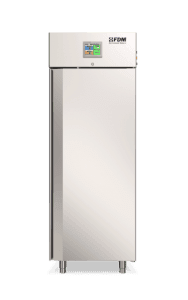
Among the factors that contribute to environmental pollution and, together, cause a risk to our health, there are VOCs or Volatile Organic Compounds.
The VOC class includes a whole series of chemical compounds which, under certain conditions, are dispersed into the air by "evaporating" from material supports.
For this it is necessary to test products and materials to verify the VOC dispersion rate they present.
SHED Testing or Evaporative Emissions Test deals with this.
The automotive sector is particularly involved, let's see why.
What is SHED Testing for?
Perhaps we don't think about it, but a common car is a heterogeneous set of multiple materials: we have external coverings, internal coverings, components, gaskets which are made of the most diverse materials such as plastics, glass, metals, fabrics and so on.
Each of these parts carries a different risk of VOC emissions, harmful both for those occupying the passenger compartment and for the environment itself.
For this reason, all vehicles are subjected to SHED Testing, an acronym that stands for Sealed Housing for Evaporative Determination.
SHED Testing is used to calculate and evaluate this risk according to internationally defined standards in order to then judge whether a particular car model is approved or not.
Perform
Climate Stress
Discover the new series of Climate Chambers for controlled climate testing
How SHED Testing works for the Automotive Sector
SHED Testing is a laboratory test that involves testing material samples or entire vehicles in a controlled environment in order to simulate the conditions of use of the vehicle and evaluate VOC emissions.
Climatic chambers are a fundamental tool for SHED Testing because, among the factors that influence VOC emissions, there are exposure to heat, UV rays and the relative humidity rate; all parameters that can be altered and modified with precision inside a climatic chamber.
International Standards for SHED Testing
SHED Testing for the automotive sector is governed by a series of internationally recognized standards which establish evaluation methods and criteria.
The general standard for VOC emissions is chapter 9 of ISO 16000.
While, the specific of the automotive sector is regulated in chapters 1 and 2 of ISO 12219.
Both standards prescribe the use of climatic chambers to perform the evaporative emissions test.
You cannot find the ideal chamber for your test?
Create your own environment, according to any test requirement
The FDM Climatic Chamber for SHED Testing
All the above tests can be performed with FDM climatic chambers.
For over 70 years we have been designing and building climatic chambers, using the most modern technologies in order to satisfy the customer and meet all the parameters of current legislation.
If you need a climatic chamber, please do not hesitate to contact us.
Would you like to receive a quote or do you have questions about the product?
Contact us to receive more information about this Product.



